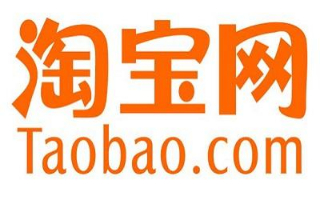 金都在生活消费行业中的票数:615
金都在生活消费行业中的票数:615
【金都是哪个国家的品牌?】
外推网助力金都品牌出海!将品牌入驻外推网,定制金都品牌推广信息,可以显著提高金都产品曝光,简直是跨境电商爆单神器!目前仅需1000元/年哦~
金华市火腿厂的前身——永昌腿栈由金士辉创办于1947年,栈址设在浙江省金华县城,是当时金华规模大的火腿厂,所产火腿闻名全国,享誉海外。根据金华文史资料第十五辑记载,金士辉是金华地区东阳县人。东阳火腿是金华地区所产火腿的上品,民间生产始于唐代,盛于明清,明万历年间已被列为贡品。金士辉利用这一有利条件,1930年在杭州创办了永昌腿行,收购家乡作坊的火腿,运到杭州批发,获利颇丰,也促进了家乡的火腿生产。但抗战胜利后,沪杭地区物价飞涨,通货膨胀,使永昌腿行的业务大受影响。再加上金华火腿产区货源短缺,永昌腿行在杭州无法经营下去,于是在1947年迁至金华县城,开始自制自销,改名永昌腿栈。永昌腿栈前店后坊,善制善销,业务发展很快,年产火腿七、八千只,成为当时金华县城十几家火腿企业中规模颇大的一家。
金华地区解放后,金华火腿作为地方名产需求量急剧上升。为了扩大生产规模,由金士辉倡导,联合元生、金泰、元隆、恒丰等私营腿栈,组成了金联火腿产销合营处,年产火腿2.4万余只。然而,由于管理不善,加上1952年遭受火灾,烧毁了主厂房,使企业处于瘫痪状态。到1954年生产年度,火腿产量降至8千余只。为了抢救企业,该合营处于1954年在金华地区较早实行公私合营,改名为金华火腿厂,由龚润龙担任厂长、金士辉担任私方副厂长,当年的火腿产量就回升到1.8万余只。1956年,该厂又在解放西路建起一幢新车间,使全厂的厂房面增加了两倍多,当年的火腿产量达到3.8万余只。1957年,该厂火腿增至6.6万余只,为公私合营后头一个生产高峰年。但到三年自然灾害期间,由于腿源剧减,火腿产量下降。到期1960年秋,该厂并入国营金华肉类联合加工厂,成为肉联厂的一个火腿加工车间。此后连续4年,年产火腿不足千只。党的十一届三中全会以后,金华地区的党政领导进一步重视火腿生产,于1979年将火腿车间从肉联厂中划出,单独设厂,仍命名为金华火腿厂。当年生产火腿5万余只,实现利润128000余元
由于改革开放后,出现了很多家金华火腿加工作坊并且都使用金华火腿的招牌,市场上的金华火腿品质良莠不齐。为创立属于自己的品牌,提高商品价值,我厂于1995年申请了“金都”商标。至2006年,金华市火腿厂已形成拥有固定资资产4783万元、年生产能力达15万只金华火腿的规模。我厂拥有一支具有丰富经验的火腿加工、质量管理、市场营销的专业技术人才队伍,并制定了严格的卫生、质量检验制度。产品70%销往香港、新加坡等地,并早在1992年在新加坡原产局注册成功,是国内金华火腿出口到新加坡一家火腿生产厂家。近年来,又积极开拓日本市场,希望能在日本市场占有一席之地。在积极开展对外贸易的同时,该厂也关注国内市场,国内餐饮业的兴起,人民生活水平的提高,也为火腿行业的发展带来了机遇。该厂的产品以质量取胜,顺利地进入了各大城市的宾馆、酒楼、大型超市。
随着市场经济的发展,火腿行业发展很快,竞争日趋激烈,各种假冒伪劣产品充斥市场,给火腿行业带来了很大冲击。在这种情况下,企业领导班子顶着巨大的压力,积极拓展经营思路,在竞争中求发展,坚信以质求胜的理念,在充分继承传统加工工艺的同时,又不断加以创新,让金华火腿永远飘香四海。
英文翻译:Yongchang leg stack, the predecessor of Jinhua ham factory, was founded by Jin Shihui in 1947. The stack was located in Jinhua County, Zhejiang Province. It was a large-scale ham factory in Jinhua at that time. The ham produced by Yongchang leg stack was famous all over the country and abroad. According to the 15th volume of Jinhua cultural and historical materials, Jin Shihui was born in Dongyang County, Jinhua. Dongyang ham is the best ham produced in Jinhua area. The folk production began in Tang Dynasty and flourished in Ming and Qing Dynasties. It was listed as a tribute in Wanli period of Ming Dynasty. In 1930, Jin Shihui established Yongchang leg shop in Hangzhou, bought ham from his hometown workshop, shipped it to Hangzhou for wholesale, and made a lot of profits, which also promoted ham production in his hometown. However, after the victory of the Anti Japanese War, prices in Shanghai and Hangzhou soared and inflation greatly affected Yongchang's business. In addition, due to the shortage of goods in Jinhua ham production area, Yongchang leg store was unable to operate in Hangzhou, so it moved to Jinhua County in 1947 and began to make its own sale, renamed Yongchang leg store. Yongchang leg inn is good at making and selling, and its business develops rapidly. It has an annual output of 7000 or 8000 hams, making it one of a dozen hams enterprises in Jinhua County at that time. After the liberation of Jinhua area, the demand of Jinhua Ham as a local famous product increased rapidly. In order to expand the scale of production, Jinlian ham production and marketing joint venture office was established under the initiative of jinshihui, in combination with private leg stores such as Yuansheng, Jintai, Yuanlong and Hengfeng, with an annual output of more than 24000 hams. However, due to poor management, coupled with the fire in 1952, the main factory buildings were burned, making the enterprise in a state of paralysis. By 1954, the production of ham had dropped to more than 8000. In order to rescue the enterprise, the joint venture was earlier implemented in Jinhua area in 1954. It was renamed Jinhua ham factory, with Gong Runlong as the factory director and Jin Shihui as the deputy factory director. In that year, the ham production rose to more than 18000. In 1956, a new workshop was built in Jiefang West Road, which more than tripled the plant area, and the ham output reached more than 38000 in that year. In 1957, the number of hams increased to more than 66000, the first peak year of production after the public-private partnership. However, during the three-year natural disaster period, the output of ham decreased due to the sharp decrease of leg source. Due in the autumn of 1960, the plant was incorporated into the state-owned Jinhua meat processing plant and became a ham processing workshop of the joint plant. Since then, the annual output of ham has been less than 1000 for 4 consecutive years. After the Third Plenary Session of the Eleventh Central Committee of the Communist Party of China, the leaders of the party and government in Jinhua region paid more attention to ham production. In 1979, the ham workshop was divided from the joint meat factory and set up a separate factory, which is still named Jinhua ham factory. In that year, more than 50000 hams were produced with a profit of more than 128000 yuan. After the reform and opening up, there were many Jinhua Hams processing workshops and they all used the signs of Jinhua Hams. The quality of Jinhua Hams in the market was uneven. In order to create our own brand and improve the value of our products, our factory applied for the "Jindu" trademark in 1995. By 2006, Jinhua ham factory had formed a scale with fixed assets of 47.83 million yuan and annual production capacity of 150000 Jinhua Hams. I plant has a rich experience of ham processing, quality management, marketing of professional and technical personnel, and developed a strict health, quality inspection system. 70% of the products are sold to Hong Kong, Singapore and other places. As early as 1992, they were successfully registered in the Singapore Bureau of origin. They are a ham manufacturer exporting Jinhua ham to Singapore. In recent years, it has actively explored the Japanese market, hoping to occupy a place in the Japanese market. While actively carrying out foreign trade, the factory also pays attention to the domestic market. The rise of domestic catering industry and the improvement of people's living standards also bring opportunities for the development of ham industry. The products of the factory win by quality and enter the hotels, restaurants and large supermarkets in major cities smoothly. With the development of market economy, the ham industry is developing rapidly, and the competition is increasingly fierce. All kinds of fake and shoddy products are flooding the market, which has brought a great impact on the ham industry. Under such circumstances, the leading group of the enterprise is under great pressure to actively expand business ideas, seek development in the competition, firmly believe in the concept of quality and win, while fully inheriting the traditional processing technology, and constantly innovate, so that Jinhua Ham will always be fragrant everywhere.
本文链接: https://www.waitui.com/brand/80246c725.html 联系电话:请联系客服添加 联系邮箱:请联系客服添加

















 浙公网安备 33011802001999号
浙公网安备 33011802001999号
